https://youtube.com/watch?v=buLyy7x2dcQ
Apple fans, start typing your angry comments now…

I really did try this time .
Guys , I even went as far as to ask my team if there was some positive spin that we could put on our review of the M Two Ultra Max studio .
I kind of wanted a glass half full angle before I had to dunk on the outrageously priced Mac Pro .
That's going to be arriving in our lab shortly , but we failed and the blame falls squarely on Apple , not on the engineers .
They're amazing and Apple Silicon is a miracle of modern hardware engineering but on the marketers , all they had to do was say M two Ultra , it's M one Ultra but more better .
And we could have said , yep , sounds good .
But no , instead they're back to their old tricks with performance claims that would get any other company sued twice in this paragraph .
Apple compares the M two ultra to the M two max .
Then they've got these eye catching performance claims that are floating down beneath it .
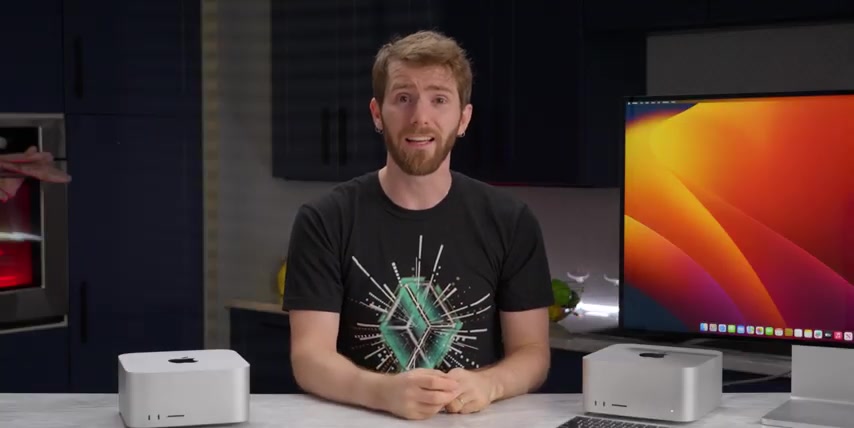
Then we scroll down more down further and this is where those numbers come from .
They're doing it again with the unlabeled graphs and frankly comical comparison points for their claims .
This is really misleading .
They weren't comparing to M two max or even M one Apple silicon .
Does Apple really think we're gullible enough to believe a three year old imac is a sensible performance reference for a professional machine .
Also , where did this number even come from ?
Click on any other heading and even directly from Apple , the M two ultras performance leadership looks a lot more narrow .
So I think it's time to roll up our lab coats , cut through the marketing , read the fine print and figure out what Apple is trying to hide from me and hide from our sponsor U Green .
Do you need some on the go juice ?
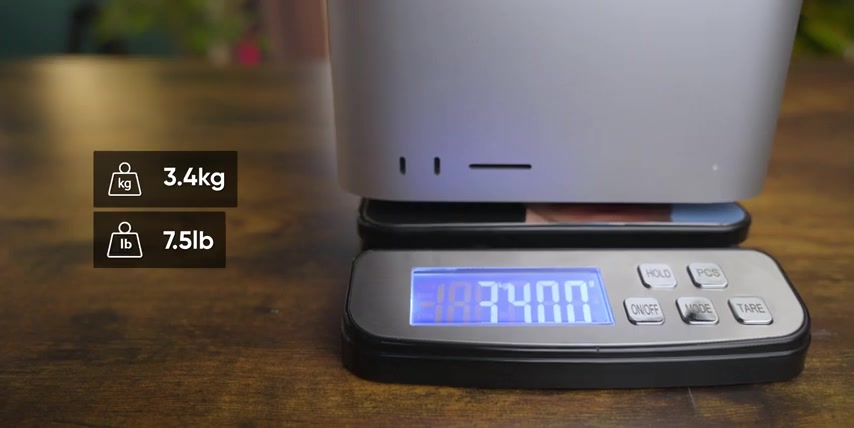
The U green 145 watt Power Bank is equipped with PD 3.0 QC 3.0 and a massive 25,000 million power battery .
Check it out at the link below .
Externally , the new Mac studio is identical to its predecessor right down to its total weight .
And that means that everything I have to say about it concerns what's under the hood .
You've got substantially more bandwidth for displays than the previous generation to the point where it greatly exceeds what a single GP PC can handle .
Plus you get Apple's upgraded Wi Fi six E module with support for Bluetooth 5.3 and the six gigahertz wifi band since it's the same wifi E module that's found in M two Macbooks that makes for a maximum transfer rate that is doubled out of last gen should your wireless router support it ?
Of course , the stars of the show however , are the upgraded M two based .
So CS M two max is the same SOC that's found on the Macbook Pro 14 and 16 .
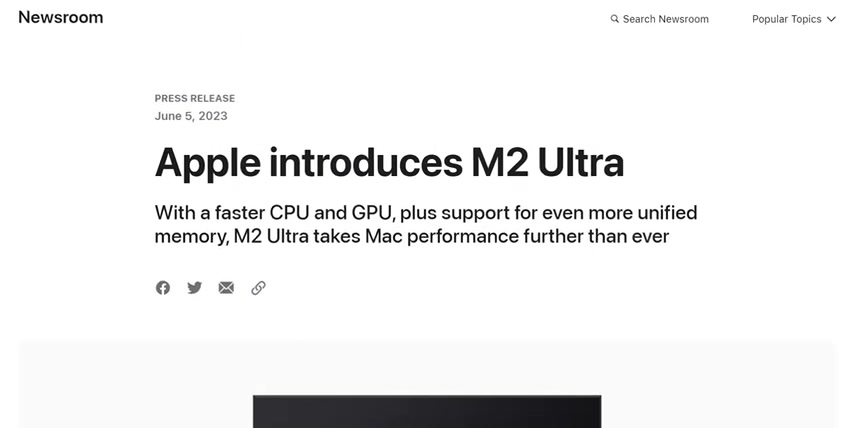
While M two ultra is only available on the desktop Mac studio and the Mac Pro , it's the most powerful silicon that Apple can build and ours is the most powerful version of it with 24 CPU cores and 76 GP U cores , which is not a massive improvement on paper next to our M One Ultra studio , especially since the memory bandwidth and ultra fusion fabric that connects the two dyes together is the same as last GEN .
But with the extra courses also comes higher clock speeds both for the CPU and the GP U which according to Apple gives the M two ultra over double the 3D rendering performance compared to last gen .
This is achieved in large part by the move to TSM CS enhanced N five P manufacturing process which makes the di denser and more energy efficient so far so good then .
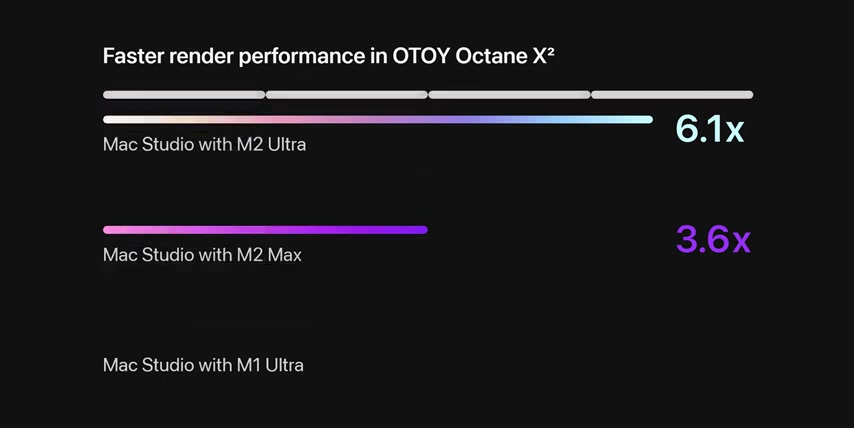
But as soon as we tried to replicate Apple's performance claims things went south faster than a game pad controlled Submersible headed for the oh sorry , things went bad .
Let's start with their deeply suspicious octane X render performance .
The X axis on their graph isn't labeled but we can infer from the numbers that are listed that the M two ultra should be about three times faster than the M one ultra .
That is not what we found , nor is it what this user from the O toy forums observed we had some ideas um like maybe our test was too short and a longer higher resolution render would give the new ultra more time to spool up and flex its muscle .
But that didn't pan out either and come to think of it .
Why would it Apple doesn't even claim to have done a complete architectural overhaul here .
The new GP U got some more cores and a faster clock speed .
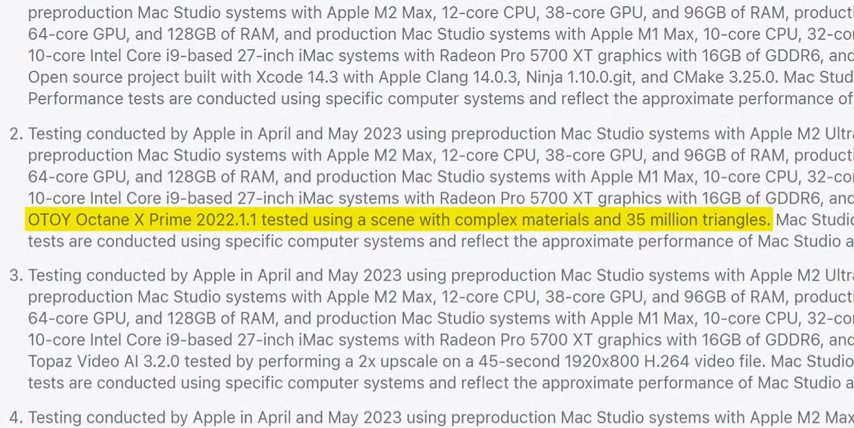
And when we click on 3D interaction , another GP bound test , we see a much more realistic generational bump .
So what is going on here ?
Truthfully , we're still not sure what we know is that it almost certainly has to do with the unspecified project that Apple used to generate their numbers .
What we don't know is exactly how they managed to create a perfect storm of conditions to support these numbers .
One idea we had was it could be that the project is larger than 128 gigs which is the maximum amount of unified memory that's supported by the previous generation Apple Silicon .
If they pushed the project out of ram , that would have severely hampered M one ultra's ability to keep up .
And that would have hampered our test machine too since we didn't spring for the full 192 gigabyte config .
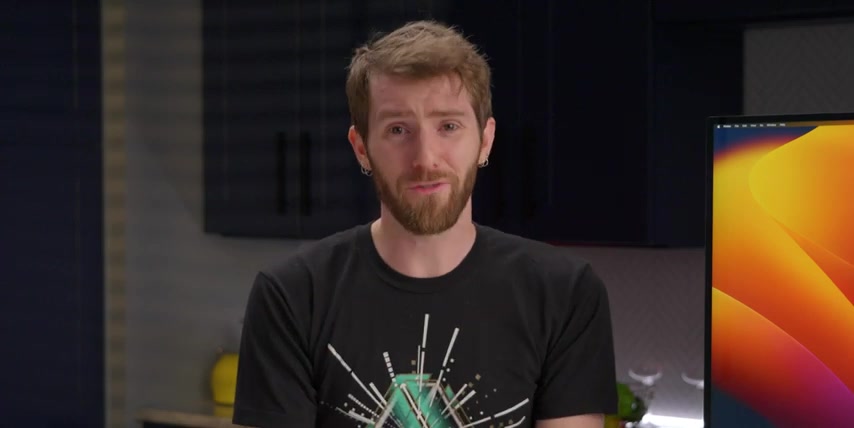
But then that still doesn't explain their M two max numbers since that machine was configured with 96 gigabytes of memory , all we can say for sure right now then is that the improved GP U performance is clearly very dependent on what exactly the GP U is crunching away at .
And even in this case , it doesn't hold a candle to an RT X 40 90 which completes render at the maximum resolution available in just three seconds .
Ouch .
Ok .
Well , what about other 3d rendering suites like redshift ?
Then here the M Two Ultra looks like it's doing about how you'd expect against both its predecessor and its little brother M two max .
But again , when we add the PC into the equation , we can see why Apple didn't want to invite these comparisons .
That's about the same degree of demolition as we saw in Octane with the M Two Ultra managing just under 30% of the 40 nines performance potential .
But Linus , you might say that's unfair .
The RT X 40 90 is overpriced .
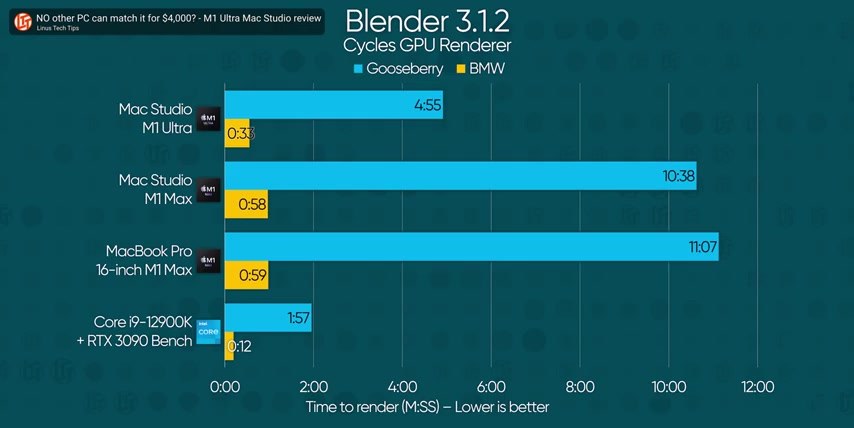
It costs $1600 and that's true .
But the GP U and the M two Ultra costs more than that .
It costs whatever Apple included in the base config pricing plus $1000 to upgrade it to the best config the one that we're using .
Ok .
How about blender ?
Then version 3.5 added an official metal render that promises a major speed up .
And yeah , it's fast .
Like this data from our M One Ultra review is a little old now .
But if we slot our new numbers in , we're seeing nearly RT X 30 90 levels of raw GP U compute power here though .
Again , depending on the scene M two ultra's best showing is still trumped by the ray tracing cores on the RT X 40 90 even gets beat by the card's slower Cooter render .
So then maybe Apple meant CPU based 3D rendering in their claims .
I'm not sure why they would focus on that , but sure , let's talk about it .
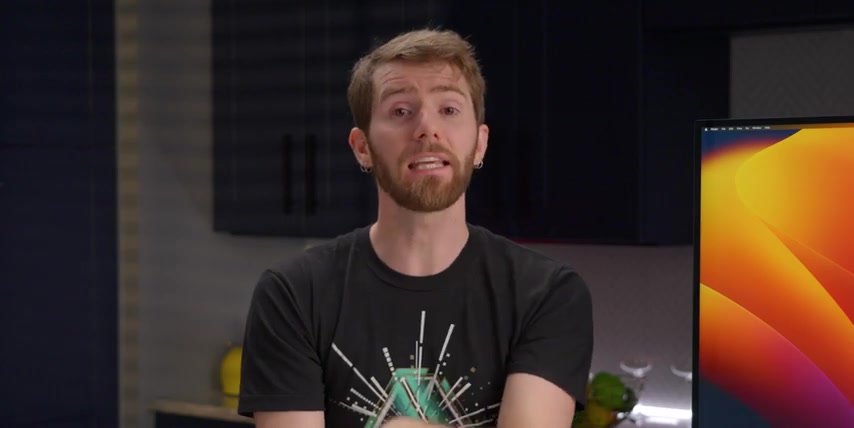
Compared to the M one ultra .
It's about as fast as you'd expect from an extra four efficiency cores and a bit more clock speed then compared to a core I 9 13 , 900 K PC .
Well , it's about that much slower still .
I mean , it's a pretty impressive showing considering that it's fairly apples to apples in terms of core count against that Intel chip .
And that's a pattern that continues when we hit it with synthetics like geekbench six where single threaded performance is about 90% of what the I nine can do .
But multithreaded performance is more or less on par if not faster .
And we see a bit more of that .
It depends performance with geek bench's GP U test where open CL is about where our previous results were .
But metal is actually higher than what the RT X 40 90 is capable of .
This highlights two very important things .
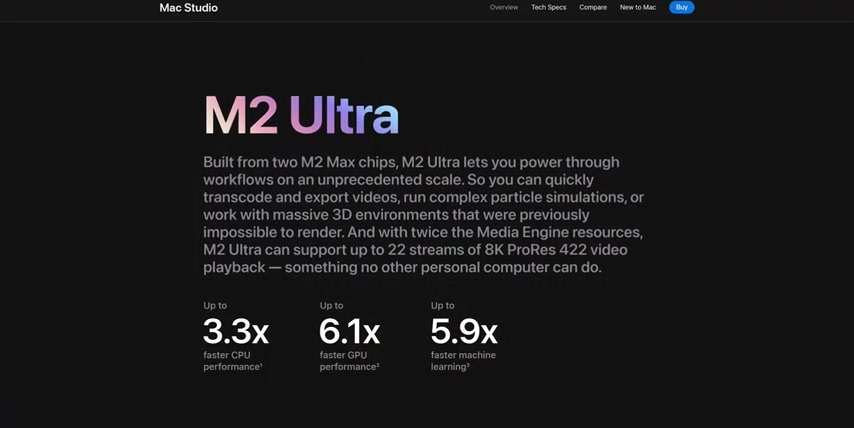
First that optimization is king and second that you cannot rely on a single benchmark to determine what your real world performance will be .
Even if that benchmark happens to be derived from a real world workload , you've got to have a full suite for an example in the other direction .
And then c while it is an Apple Silicon native apps bench is a notoriously intel optimized benchmark that hasn't yet been updated with cinema four D's Apple Silicon optimizations .
So while we are seeing OK , scaling between our Apple chips Intel absolutely dominates here .
Again , this isn't something that we saw in real world workloads and shows you how important benchmark selection can be , whether you're trying to paint a narrative about your own product or a narrative about a competitors .
Let's look at another of Apple's chosen benchmarks , then color grading Apple's using Da Vinci Resolve studio here .
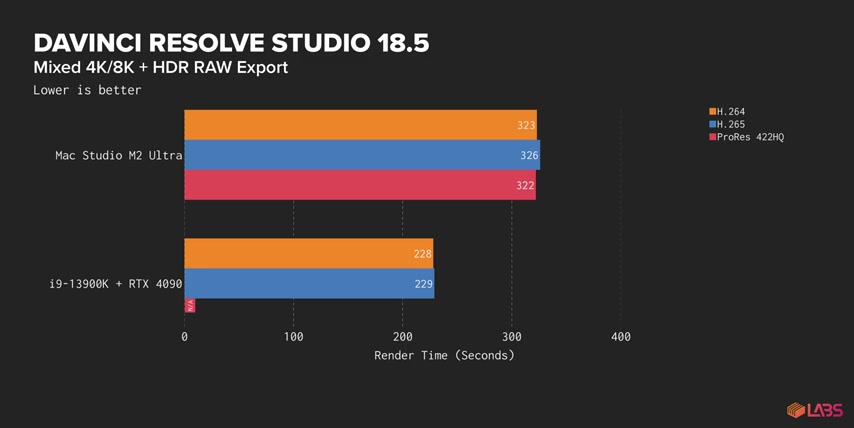
And the test sequence is a 28 2nd progress project with noise reduction .
Last time I checked , that's not really what color grading means .
So our project then is four minutes of mixed four K and eight K black magic raw and red raw clips with actual HDR color grading and de noising .
And I'm starting to feel a bit like a broken record here , but the PC is faster and for whatever reason , our M two ultra machine far from being 50% faster .
Like Apple claims ended up running slower than our M one ultra machine .
This has to be some kind of bug , maybe something kind of like what we saw with the game porting tool kit video where we used M one ultra silicon because it was what we happen to have and it turns out it's totally bugged and performance was way lower than it's supposed to be .
But then in this case , we went out of our way to test with Resolve studio 18.5 beta , just like Apple did .
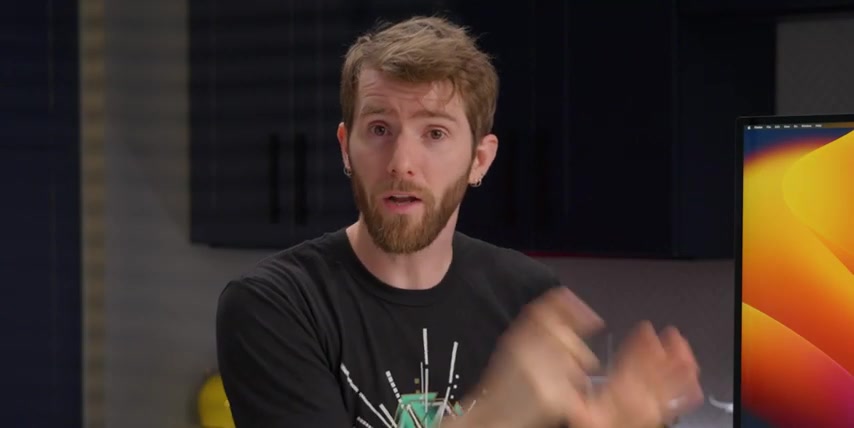
We tried changing the export parameters and we just got the same results every time .
All I can guess is that because this is beta software , maybe something broke in between Apple doing their testing and me doing mine .
So Apple , I know you've got my digits .
If you want to help us look into this , hit me up and guys , we'll pin a comment if we hear back from them and get this resolved pun intended .
Uh What's left then ?
Oh , how about code compiling ?
Apple used an open source project built with X code .
Thanks .
Um very reproducible Apple .
So we used Chromium and whatever Apple was compiling , we are just not seeing the M two ultra getting double the performance of the M two max .
Though the M one ultra number does look like it's in the ballpark just by eyeballing the bar graph links .
Apple does manage to outperform intel here though .
But that could be partly down to the build target .
Apple didn't specify whether they were targeting Apple silicon or X 86 on the Intel Mac .
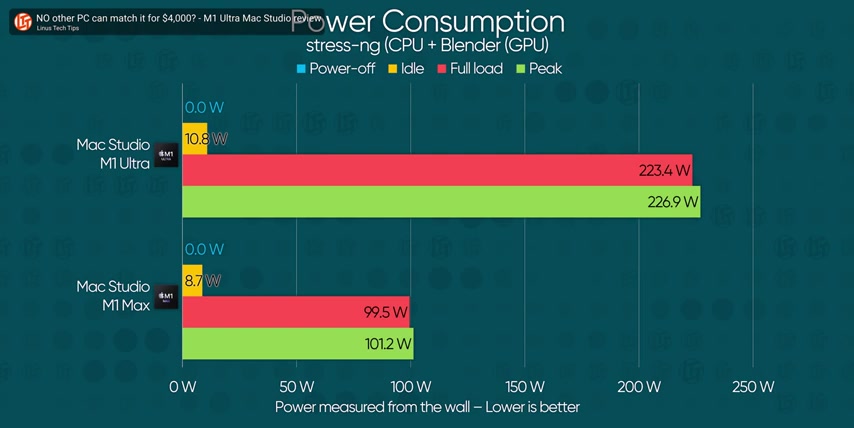
So we just built native for each platform just like we built our screwdriver available at L TT store dot com .
So far , all of this sounds pretty bad for Apple then .
And as far as their shady marketing is concerned , it very much is .
But there's an elephant in the room that we haven't talked about yet .
And that's power in our M one ultra max studio review .
We observed power consumption that never pushed beyond 227 watts for the entire box .
However , while we had a pretty good CPU stressor at the time , we didn't have a great way of stress testing the GP U .
But now that blender has a metal render , we can give it a bit more of a workout .
Do bear in mind .
Of course , that this is a worst case scenario .
And uh it's pretty impressive .
It looks like the total power from the wall peaks at around 331 watts at room temperature .
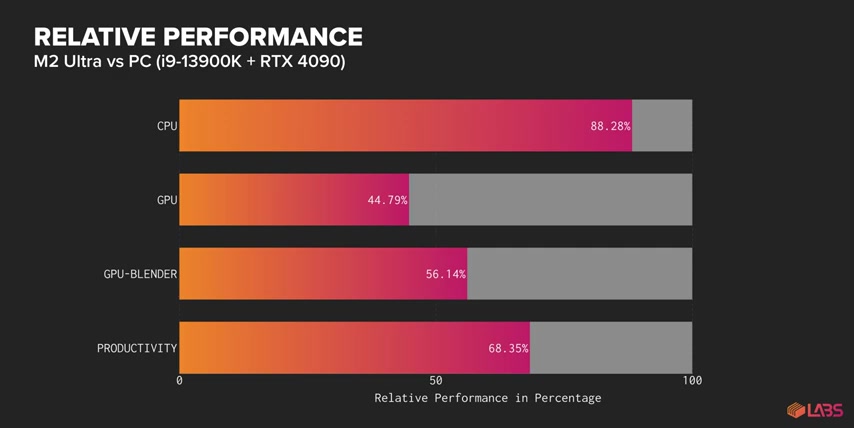
Which real talk guys , either a co I nine or an RT X 40 90 could draw on its own sometimes even more .
And the idle power consumption is maybe even more impressive at just 18.5 watts .
My phone charges with more juice than that given that we're looking at CPU performance that's roughly 90% of the way to a core I nine and A GP U .
That's anywhere from about 30 to all the way as fast as an RT X 40 90 .
This efficiency is nothing short of unbelievable .
This is what Apple should have been shouting from the rooftops about not cherry picked benchmarks compared against older hardware .
Uh Speaking of which , there is one more claim that we need to verify though operating temperature to do so , we popped the Mac studio into our handy dandy environmental chamber and let our combined CPU and GP U load rip .
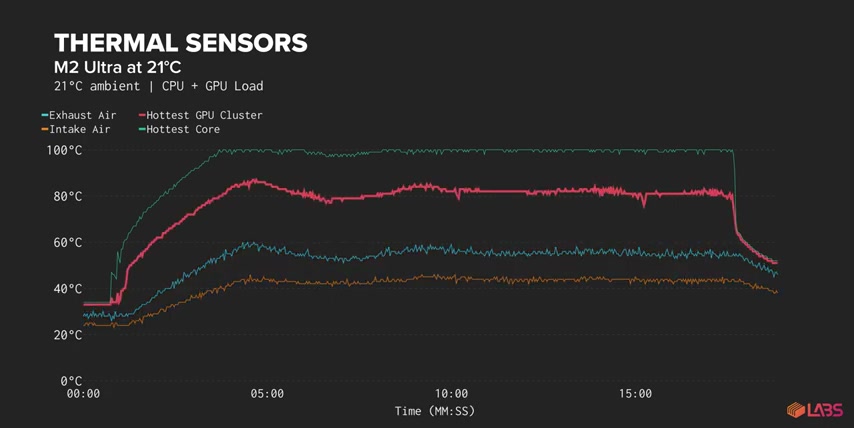
And fortunately , the max studios thermal design is quite capable of handling the load at room temperature .
However , it's worth noting that the system does throttle its performance rather than increase the fan speed beyond 1900 R PM .
That means that you could end up sacrificing some performance for lower noise unless you use a utility like TG pro to Automax your fans to simulate a warmer environment .
We cranked our ambient heat to 35 degrees and unfortunately , it chokes pretty hard here .
That's disappointing compared to the perfect performance we saw from an RT X 40 90 at these temperatures .
At least the fans do finally push past 2000 R PM and they do creep a little higher over time .
But even after 20 minutes , they never managed to max themselves out .
Despite the fact that the CPU is obviously throttling , we saw power consumption that was rapidly fluctuating between 215 and 280 watts .
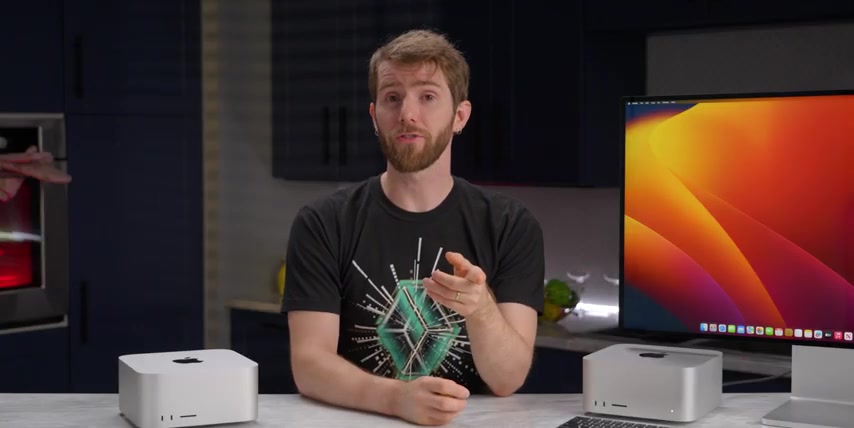
So , if you're living in a hotter climate and you don't have air conditioning , don't settle for Apple's auto settings .
You're gonna want to set an aggressive fence curve to cap off our thermal chamber testing .
We wanted to see if dropping the temperature unlocked a little bit more performance .
So we set it to 10 degrees , roughly fall or spring temperatures around these parts .
And the answer is no Apple will simply maintain the fan at a lower R PM , meaning that you could get quieter operation , but you won't see any more performance .
And this is confirmed by the roughly similar peak wattage that we observed compared to our room temperature test expansion is an interesting conversation that we haven't touched on yet though almost all of the criticism for the M One Ultra soc , aside from our assertion that M one max made it a pretty tough sell .
Oh and Apple's disproven claims of GP U performance kingship was centered around the lack of 48 gigabits per second .
HDM I and its general inability to drive eight K displays .
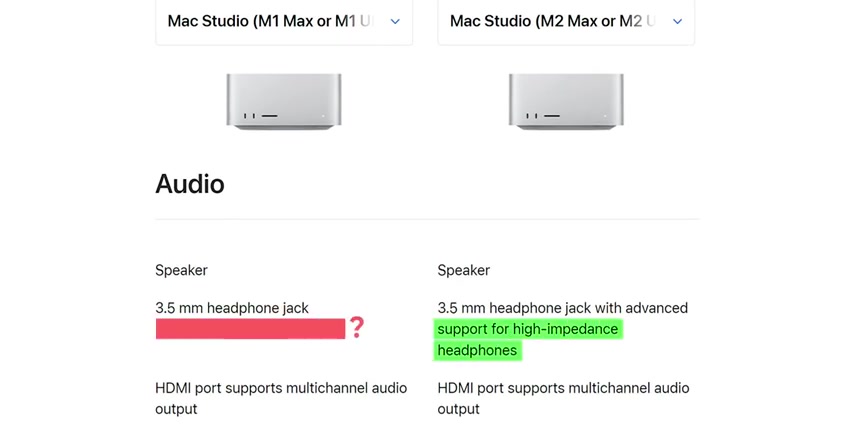
Well , with the HDM I upgrade and the M two ultra's ability to drive up to three of those aforementioned eight K panels , those limitations have basically melted away .
And if you think about it , there are very few scenarios where this much expansion is not going to be sufficient , especially considering that 10 Gigabit Ethernet has been standard since the first Mac studio .
Imagine saying that about an Apple product class leading IO I love it .
A side note .
By the way , it's really strange that Apple neglects to mention that the first Gen Max studio also has a high impedance headphone jack just like the new one does in the compare page archive dot org exists .
You guys come on , that is not a value add for this gen speaking of value , there are certainly professionals and consumers out there who are going to buy this and be happy with it at any price and I'm not going to mock them for it .
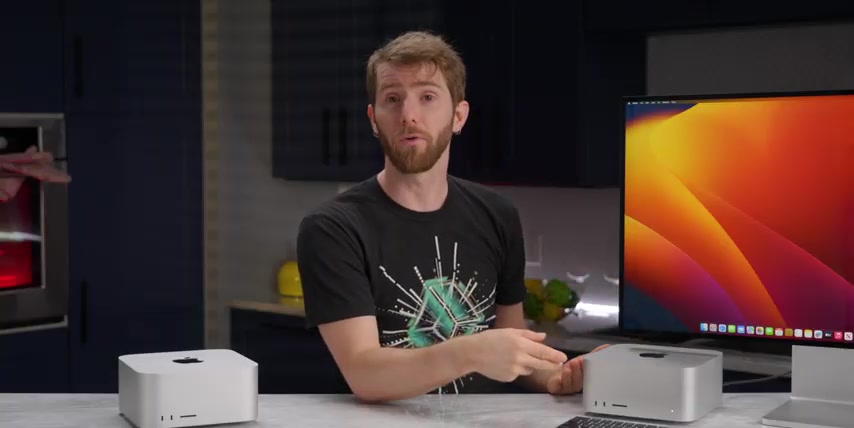
I mean , Apple's got their ecosystem and perhaps more importantly , they've got applications like final cut and logic pro .
So if your workflow requires Apple tools that is totally valid and objectively speaking , this is the fastest A Mac can go today and it's going to be quiet and draw less power than A PC while doing it .
That's what you're paying for .
Same price as last gen faster computer .
What's there to complain about ?
Then aside from the ridiculously expensive proprietary storage that you can't upgrade post purchase for everyone else .
However , $4000 is a freaking lot of money and that doesn't even get you the top of the line M two ultra , that's going to be an extra $1000 on top and then another $800 for the 128 gigs of memory that we put in ours .
Let's put this into perspective .
A PC with a core I 93 , 900 K and A G four RT X 4 90 with the same capacity NVSSD .

The same amount of system memory actually more .
If you count the GP U Ram and even taking into account , the cost of the operating system is going to cost $1722 less .
You could quite literally buy a completely overkill PC that most people wouldn't even consider to begin with .
And then with the money left over , you could also buy an M Two Pro Macbook or a Mac mini .
That's a yikes and it might be about to get even worse .
I mean , what if anything is going to be the advantage of using Apple's brand new Mac Pro chassis over the Mac studio , the SOC is the same , but the price is $3000 higher and there's no support for GP U Accelerators in its PC ie slots .
Maybe the entire point of that product is to make the Mac Studio seem like a somewhat acceptable value .
We're gonna find out just like we're gonna find out about our sponsor .
It's summer and what better time to enjoy the great outdoors .

But if you need to stay connected to the world or just power that Fancy electric barbecue , you just brought along with you , you're gonna need some power .
That's where you Green's power roam 1200 watt portable power station comes in with 1000 and 24 watt hours of battery support for up to 2500 watt devices and a 100 watt USB C and A ports .
It really is an all in one .
Get it all done workhorse .
But what about actually charging ?
The thing ?
Won't that take forever ?
U Green claims that it can charge up from 0 to 80% battery in 50 minutes .
50 minutes with its power zip tech .
Oh , and it harnesses the power of the sun as well with solar charging that will fully charge it in four hours .
Be prepared for your next outdoor adventure .
Check with the green power roam 1200 watt portable power station below .
If you guys enjoyed this video for more on the M Two , go check out our review of the M two Macbook Pro .
Turns out cooling is a big deal .
Are you looking for a way to reach a wider audience and get more views on your videos?
Our innovative video to text transcribing service can help you do just that.
We provide accurate transcriptions of your videos along with visual content that will help you attract new viewers and keep them engaged. Plus, our data analytics and ad campaign tools can help you monetize your content and maximize your revenue.
Let's partner up and take your video content to the next level!
Contact us today to learn more.